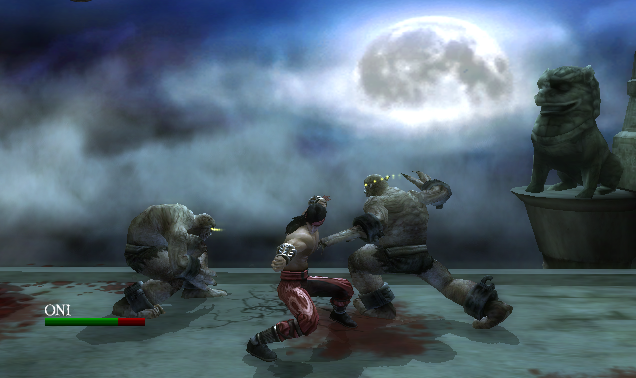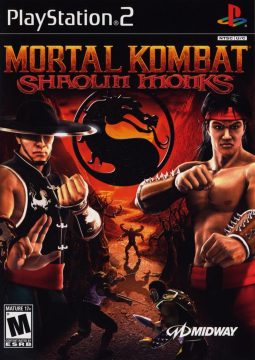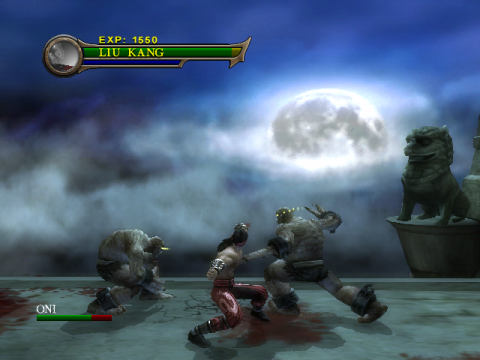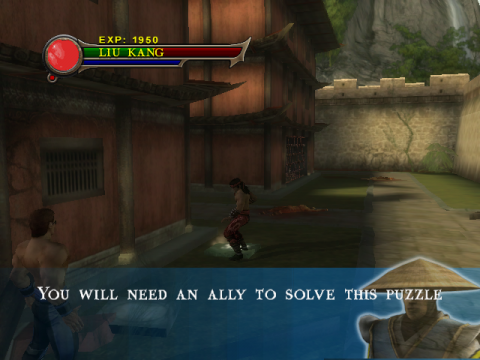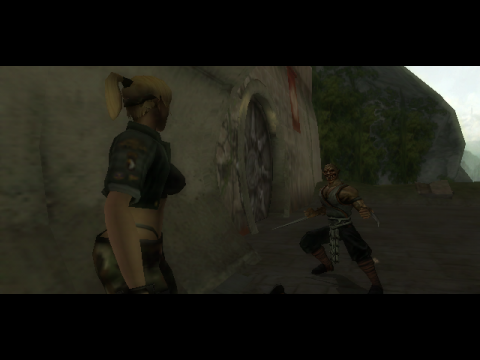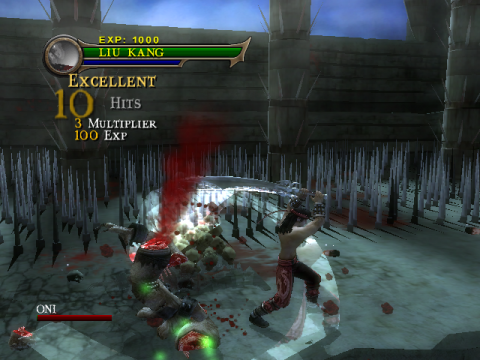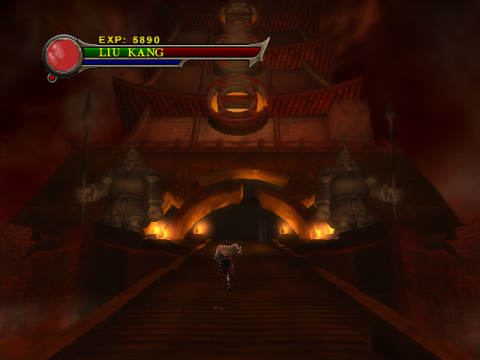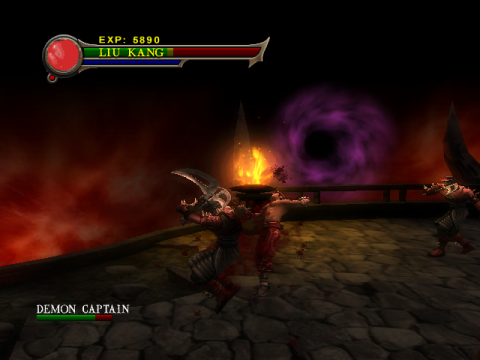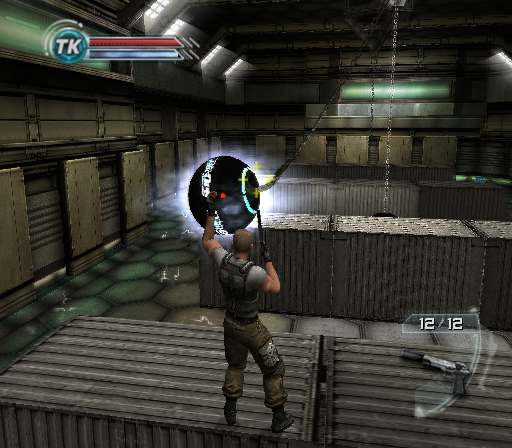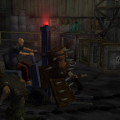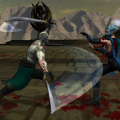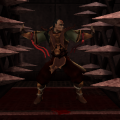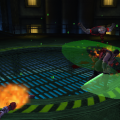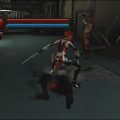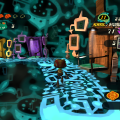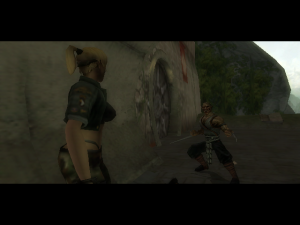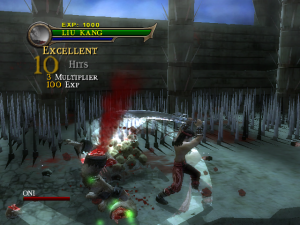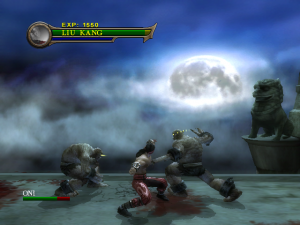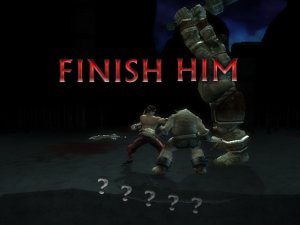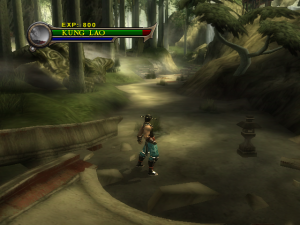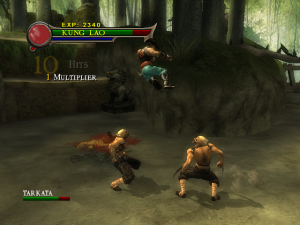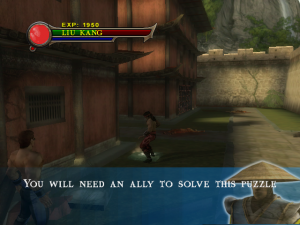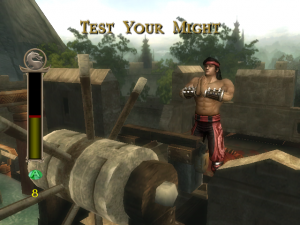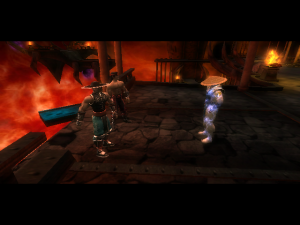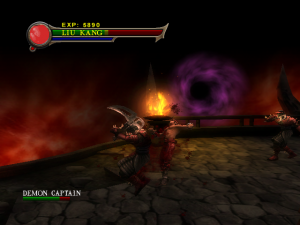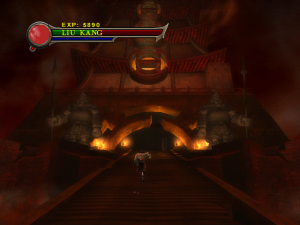- Mortal Kombat (Introduction)
- Mortal Kombat (1992)
- Mortal Kombat II
- Mortal Kombat 3
- Ultimate Mortal Kombat 3
- Mortal Kombat Trilogy
- Mortal Kombat 4
- Mortal Kombat Mythologies: Sub-Zero
- Mortal Kombat: Special Forces
- Mortal Kombat: Deadly Alliance
- Mortal Kombat Deception
- Mortal Kombat: Shaolin Monks
- Mortal Kombat Armageddon
- Mortal Kombat VS DC Universe
- Mortal Kombat (2011)
- Mortal Kombat X
- Mortal Kombat (Miscellaneous)
Mortal Kombat‘s previous attempts to break out of its conventional one-on-one fighting roots have been… if there’s a more condescending way to say “subpar,” that’d be the best adjective. Mythologies had an interesting premise, but it was ultimately hampered by unfair difficulty complemented by too many pitfalls mixed with one of the worst control schemes in game history. Special Forces turned out even worse, churning out a horribly bland product that nobody would guess had anything to do with Mortal Kombat just by glancing at it. Not even MK4 was as bad as these two Shokan-sized mistakes, but admittedly it wasn’t much better, either. After Special Forces, the series was starting to lose touch with its original spirit by introducing lame characters and terrible plotlines that revolved around said characters, particularly Deception‘s dreadful quest mode starring some Shaw Brothers reject calling himself the hero. MK did truly suffer through the dark ages throughout the zeroes, but there was one fairly bright spot right in the middle of it with Shaolin Monks, Midway’s third attempt at an MK action game. Considering their prior track record with beat-em-ups, no one really expected much from Shaolin Monks when it was first released, but it turned out to be a surprisingly fine effort. It proved that not only could a good MK action game could be made, but it also brought back some of that old-school charm evocative of the series’ early games.
Said charm is heavily based on the game’s semi-canonical place as an interquel taking place right at the end of the first Mortal Kombat with the events leading up to MK2. The game actually opens with a badass cutscene that depicts a battle royale placed at the end of the first tournament, with all the good guys (Raiden, Liu Kang, Sonya, Johnny Cage, and Sub-Zero) against the ungood guys (Scorpion, Kano, Reptile, Baraka, and Shang Tsung), when Kung Lao jumps in (disguised as a tournament guard) and Liu gives the old wizard a severe beating, but Goro’s intervention allows Shang Tsung to create a portal and escape. The floor crumbles and some of the heroes get out, but Liu Kang and Kung Lao fall through and get separated from everyone else. It’s a real cool intro that harkens back to the simple days of Mortal Kombat before urban invasion and zombie heroes were a thing. As the title suggests, the main focus is on the Shaolin Monks, Liu Kang and Kung Lao. While they’ve never quite been up to the popularity status of Scorpion and Sub-Zero, the Monks are two of the series’ most famed and important characters, and they’re certainly a more appropriate choice to star in their own buddy action game than other potential combinations. (Noob Saibot and Rain? Sindel and Sheeva? Kobra and Kira?! Sorry for that last one.) There are plenty of cutscenes, though the plot itself is pretty straightforward, where the duo has to journey into Outworld in order to put a stop to Shang Tsung’s evil schemes and work their way up to besting Shao Kahn. There isn’t much to say about the story, but the cutscenes are skippable in case you’d prefer to get right to brawling.
Before the action, you get to pick whether you control Liu Kang, Kung Lao, or even team up with a friend for both to wreak simultaneous carnage! The game starts with them surviving their fall into Goro’s Lair and Raiden telling them to hightail it to Wu Shi Academy. Not too long after, they are accosted by ugly Outworld denizens who want to beat the stuffing out of them, and you’re introduced to combat right off the bat. You can either smack then with quick attacks, pop them with a launching attack, knock them down with a power attack, or shrug off surrounding enemies by throwing them. On top of the standard attacks, the Monks’ trademark special moves carry over to their repertoire. Holding the right shoulder button and pressing one of the attacks releases one of their specials; Liu Kang has his fireball, flying kick, and uppercut (without the cartwheel at the start), and Kung Lao has his hat toss, teleport, and cyclone spin. All the special attacks are useful in their own ways, but they’re powered by a small blue bar beneath your life meter that drains with use, automatically recharging during non-use. You’ll also earn new abilities for traversing the environment as you play, like a long jump, or the Fist of Ruin, which lets you destroy certain stone structures. You’ll have to do the occasional bit of backtracking and to open up secret areas, but not nearly as much as your average Metroidvania. You’ll also come across secret areas containing stuff like concept art and secret areas, and there’ll be times when you need two players to reach these goodies.
Of course, Liu Kang and Kung Lao’s signatures even include their finishing moves; after all, what’s a Mortal Kombatgame without Fatalities? MK vs DC Universe, but that’s neither here nor there. Unnecessary answers to rhetorical questions aside, Shaolin Monks has even managed to wedge Fatalities into its formula thanks to that big red orb to the left of your life and dash meter that fills up with blood as you whomp on enemies. If the orb fills up, you can initiate a stunning strike on an enemy and cause the good old “FINISH HIM!” mantra to pop up, prompting the input of a combination that consists of four directions and a button. Liu gets eight and Kung gets nine in total, some of which are old classics (Liu’s Dragon chomp and Kung’s vertical bisection hat slice) and some fresh new finishers, like Liu brutally breaking most limbs before going for the neck snap, and Kung pulling a cute rabbit out of his hat in allusion to his Friendship from Mortal Kombat 2, only to hilariously beat his opponent to death with it. That’s probably the goofiest out of the lot, but suffice it to say that these are amongst the best life-enders since MK2. But wait, it gets better! At some point in the game, you gain a second blood tank to store your Fatality energy. If you max out both tanks, you can perform the all-new “Multality,” an area-sweeping attack that obliterates every enemy in the vicinity. Liu and Kung have two each and they can be useful, under the caveat that both tanks drain for using them. Even better is when you gain three tanks later in the game and you activate the “Brutality” mode. Akin to Dante’s “Devil Trigger” from Devil May Cry, activating Brutality superpowers your characters and makes them liquefy any mook they hit. Liu Kang is imbued in fire as he spits out infinite fireballs and viciously beats down enemies, while Kung Lao takes his hat in hand and uses it for melee, splitting bad guys apart at the sinews with the tap of a button.
Finishing off singular enemies with Fatalities nets you bonus experience, though Multalities and Brutalities get you no extra points. However, the big way to rack up experience points is to keep the damage flow rolling and keep hitting enemies to extend your combo count while also killing them. Build up your combo count high enough and you might even hear a “Toasty!” – the signal for you to hit the Start button and earn yourself some extra XP. Depending on how many enemies you destroy while keeping the combo alive, you can gain quick experience, which then can be spent on enhancing your special moves and adding new combos to your repertoire. The experience system is pretty light compared to other games that reward your carnage with more moves or weapons, and you can actually max out your moveset before you even hit the game’s halfway mark. It’s disappointing that there’s not too much you can ultimately get with your points, but at least you’re practically guaranteed to have all you need to pummel Outworld’s goons well before the game’s end.
Said goons come in a fair variety of Outworld’s denizens, starting out with basic Oni but quickly moving up to trained Tarkatan warriors. Yup, you face soldiers from Baraka’s race, and they even liberally use familiar blade spark projectiles. Other fodder includes slow-but-plentiful corpses and skeletons, different types of Demons (with the Generals being particularly rough), and rival mercenaries from the Black and Red Dragon clans, who start out fighting each other before they focus on you. Two popular background characters even make their way in as somewhat infrequent enemies: The Mask Guards (from MK1‘s courtyard) and the Shadow Priests (from the Tower and the Portal in MK2). This is a decent variety of otherworldly thugs to beat upon, though perhaps the Tarkatans are a little bit overused. It’s still neat to observe the evil denizens of Outworld, considering the interesting atmosphere MK2 created for the realm many years ago.
It is clear Shaolin Monks relies a fair deal on its nostalgia factor for entertainment as indicated by the locations you visit, which includes almost every arena from Mortal Kombat 2 in some form and even a few areas from the first game. Heck, you start out in Goro’s Lair (still complete with those ominous staring eyes) and transition to The Pit, before you move to the Wu Shi Academy which contains the Warrior’s Shrine. Everything else from that point on is familiar from MK2, with The Portal acting as a nexus to other familiar locations, including the Living Forest, the Wasteland, and even the Dead Pool. The environments themselves are full of deadly hazards you can either knock or throw enemies into, and at several points, you are even required to hurl your enemies into some nearby catapult or spike wheel to clear a path or unlock a door. The game’s puzzles don’t really get much more complex than this, though in some situations the targeting when you’re attempting to throw in a specific direction can be spotty. However, it is admittedly cool to be able to use the environment to your advantage like a classic MK stage Fatality, and it interjects a bit more variety into what would otherwise be a standard “beat the snot out of multiple enemies” formula. Also there to spice up that formula are numerous boss battles, often the most challenging part of any brawler.
The boss fights are mostly against familiar MK kombatants, and much of their classic moves are also intact. You can expect to engage in a trio battle between Kitana, Mileena, and Jade, a swampy rumble against Reptile, a long-range duel on Baraka, a frosty tussle against Sub-Zero before he realizes you’re not his enemy, a brutal battle against Goro, and an incredibly persistent Scorpion who doesn’t die when you expect him to. These fights take place in the same engine you fight the regular enemies in, which means that even the regular fighters put up much more of a fight than they did in the fighting games. Non-familiar enemies include the first boss fight against the Oni Warlord, the Orochi Hellbeast which you fight twice, and a really heinous platforming segment while being dogged by Reptile’s giant pet snake, all of which actually fit pretty well alongside the familiar battles. Akin to MK2, the three final battles are Shang Tsung, Kintaro, and Shao Kahn. But unlike MK2, the big SK whips out his warhammer and becomes an incredibly evil final boss, almost as much as he was in the old days. Optionally, you can fight Kano before the last battle with Jax assisting you, and a hidden Ermac even awaits you if you know where to look. These bosses are all quite fun and challenging, and you even get to perform special custom Fatalities after draining their lifebar. Be careful, though, because they won’t be afraid to pull one off on you, either. Absolutely no one from the first two MK games is left out of the loop, and Noob Saibot even shows up for a brief cameo even if he doesn’t really do much. Even Kabal, arguably the best new character in MK3, shows up for a pre-mask appearance.
So there’s a lot of old-school Mortal Kombat love abound in Shaolin Monks, including Midway’s penchant for cramming the game full of secrets and easter eggs. The overall map structure is non-linear and you can go back to almost any area you want, save for Goro’s Lair and The Pit at the beginning. This accords to the huge amount of secrets hidden in every cranny of every area. Seriously, each section has at least one secret yin-yang that, if grabbed, unlocks a secret piece of concept or stage art. You’ll have to jump up to ledges that might not be immediately visible on-camera, or you may have to toss enemies through breakable walls. Some secret tokens can only be accessed if you are playing in co-op mode, which can be admittedly annoying, but only if you’re a 100% completionist without a reliable player two. Still, buddy or no buddy, there’s a lot of bonuses to find if you look high and low, like the aforementioned battle against Ermac and even an appearance from the elusive Smoke, who tasks you with special missions that lead to a bodacious bonus: The original Mortal Kombat II! Its difficulty is still as brutal as ever, but it’s cool to have around for those who are either nostalgic or missed out on it in the nineties.
Perhaps the most prominent unlockable is a certain duo of former palette swaps who are even more popular than the Shaolin Monks themselves. While Liu Kang and Kung Lao are the mains, it wouldn’t be Mortal Kombat if Scorpion and Sub-Zero weren’t somehow playable. If you beat the game with Liu, you get to play as Scorpion in the main game, and Kung Lao nets you Sub-Zero. They come with their own familiar special moves like Scorpy’s teleport punch and Subby’s ground freeze, though their normal attacks are somewhat lazily borrowed from the monks, and they have much fewer Fatalities than the main heroes to boot. Still, it’s a neat bonus that adds further replayability to the main quest, though it is quite goofy to see the ninjas reskinned over the monks in all the cutscenes. It gets especially silly when you see Sub-Zero make jokes about Kitana, to which Scorpion will angrily counter “She’s not my girlfriend!” If you ever get tired of tearing up Tarkatans and you have a second player along, there are even more fighters you can choose in the game’s versus mode. In this mode, you naturally get to pick Liu Kang, Kung Lao, Scorpion, and Sub-Zero, but you also get to select four more familiar faces not normally playable in the main game: Johnny Cage, Reptile, Kitana, and Baraka. These characters all have their familiar moves and Fatalities, and Johnny actually gets an all-new one that takes his infamous groin punch attack to ridiculous levels. It’s actually quite fun to play against other fighters on the Shaolin Monks engine, even if it’s not as deep or tight as a conventional one-on-one fighter. However, you’ll have to unlock most of the fighters in the main mode, and its presence may make one wonder why the four exclusive characters aren’t playable on the campaign. Regardless, it’s still a neat extra, and what’s even neater is the presence of the original Mortal Kombat 2 as another campaign unlockable, awarded to you if you finish Smoke’s five secret missions.
Shaolin Monks could have been the best beat-em-up of 2005 were it not for the release of God of War a few months later. Granted, Shaolin Monks is more like a straight old-school brawler and God of War has a heavier emphasis on its puzzle and platforming elements, but both games are ultimately similar by virtue of involving multiple ways to brutally obliterate mobs of enemies. Shaolin Monks didn’t quite get as much exposure to the public as God of Wardid, with the Greek choleric going on to sell over three million copies and Shaolin Monks not even reaching up to one million, which is quite a shame. Sure, it’s not quite as polished as Kratos’s mythological killfest, and it does have its fair share of foibles like the insubstantial experience system, the annoyance of trying to specifically throw enemies into something, and a few segments which really drag on like a droll zombie boat ride in the Wasteland. It’s funny, really, considering how much inspiration God of War itself takes from Mortal Kombat. (A supernatural warrior using supernatural abilities and brutal finishing moves on his enemies? Boy, wouldn’t it be crazy if Kratos was in a Mortal Kombat game? Like that would ever happen.) Yet for all of its faults, Shaolin Monks is still a danged fun game and, for its time, the best thing to have been produced under the ailing Mortal Kombat name in years. It arguably stands out above the actual MK fighting games of the 2000’s and also doubles as a solid entry in the nearly-dead genre of beat-em-ups. Around this time, we saw such other “gems” as Final Fight: Streetwise, which was not bad on its own but dubious as a Final Fight revival, and Beat Down: Fists of Vengeance, which was just bland all around. There was also the fantastic God Hand and the underrated Urban Reign, but they didn’t quite have as much public push. Shaolin Monks did not sell as well as it could have, perhaps due to MK being thought of at that time as a fading relic whose cheese-and-gore appeal was wearing thin. It’s too bad it was relatively refused in the public eye, as it was the last unironically venerable MK product to be made before Midway’s eventual collapse. After Shaolin Monks, MK‘s status would take a turn for the even worse, but at least this served as an enjoyable reprise of the series’ heyday.
